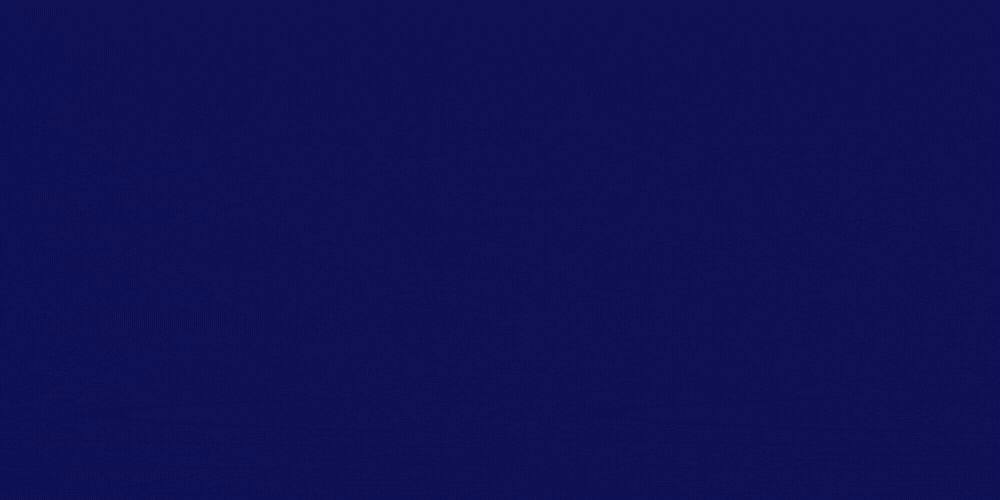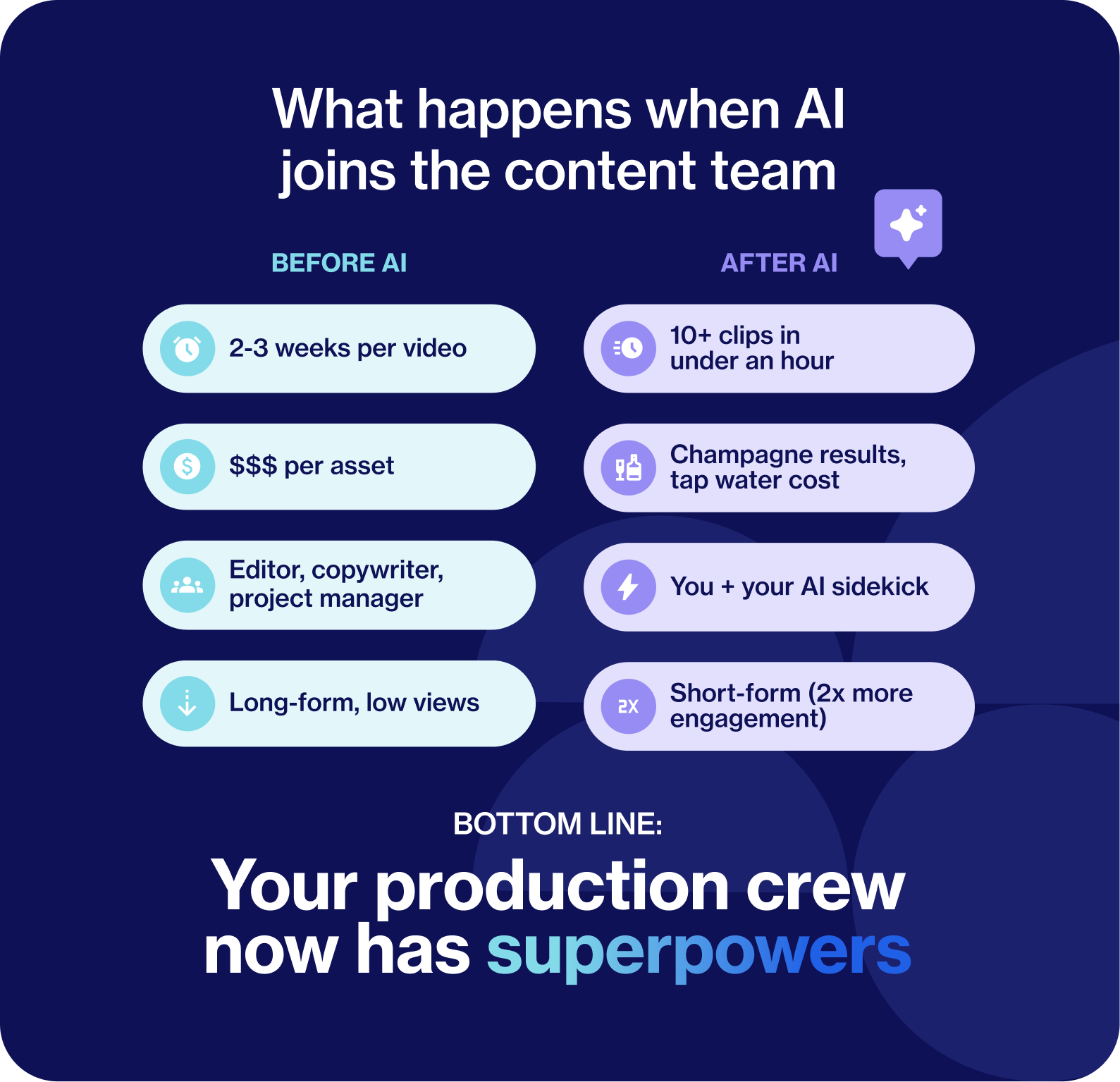AI is reshaping B2B video

Table of contents
- Why short-form video is now dominating B2B channels
- The AI tools powering modern B2B video workflows
- From scripting to subtitling: AI's role in every step
- The B2B marketer's dilemma
- Smart ways to use AI in B2B video
- Use AI, but don't forget to keep your brand in frame
- Quick guide to short-form video in B2B marketing
The last social feed you scrolled was probably dominated by video. That’s been the norm on most social media platforms for some time, but now it’s true of B2B platforms like LinkedIn, too.
In particular, the short-form video genre is an increasingly popular option for everything from product explainers (which used to be highly produced) to CEO soundbites (which weren’t a thing when brand mattered more than people). As a result of this natural evolution, B2B platforms are evolving into video-first ecosystems. LinkedIn, YouTube Shorts, and even Instagram and Threads are rewarding short-form video with greater reach and stronger engagement.
Why short-form video is now dominating B2B channels
The catch: everyone’s making short-form videos. Not everybody knows how to do it well.
Creating video content consistently has traditionally been a heavy lift. It demanded planning, scripting, filming, editing, and often collaboration across multiple departments or vendors. And for lean B2B marketing teams, that can be a nonstarter, especially if you’re juggling a product launch, a campaign calendar, a CEO who wants to “go viral,” and a social dashboard lighting up like a Christmas tree.
AI is (thankfully) flipping that script.
The AI tools powering modern B2B video workflows
Today, artificial intelligence tools can assist marketers in writing scripts, generating visual content, cloning voices, subtitling videos, and even optimizing distribution. Marketers are using these tools to slash production time and costs. With a few clicks, you can go from idea to publishable video.
But while AI makes video creation accessible to all, it doesn’t guarantee quality. Or strategy. And that’s where smart B2B marketers need to draw the line between automation and intention.
Recommended for further reading
From scripting to subtitling: AI’s role in every step
The biggest shift AI has brought to video creation is the compression of the workflow. What once took hours or days now takes minutes.
There are several tools for every aspect of the workflow:
1. Scriptwriting and ideation
ChatGPT, Jasper, and additional AI writing tools can generate outlines, talking points, or complete scripts in seconds. They can mimic your brand’s tone and voice and target specific audiences, and suggest hooks that resonate with your buyer persona. This is especially useful for social-first content, where brevity and directness are essential.
Strategic tip: Use AI to draft multiple tone alternatives of the same script. Then, test them across different audience segments to identify which version performs best. This leverages AI’s biggest strength: its ability to help you experiment with multiple alternatives. The real beauty isn’t just producing more content, but producing more strategically, so you can refine your messaging and double down on what works.
2. Video generation and editing
Platforms like Pictory, Synthesia, and Runway ML turn text into visual content using AI avatars, stock footage, or animations. They can help you make a talking head video without filming anyone. If you need to convert a blog post into a narrated summary? They can also help with that. These tools enable scalable video creation across product marketing, thought leadership, and internal communications.
Strategic tip: Use AI video tools to produce variations of the same asset optimized by platform: square format for LinkedIn, vertical for Instagram Reels, and landscape for embedded blog posts. Distribution-native content outperforms repurposed one-size-fits-all clips.
3. Subtitles and accessibility
Submagic, Captions, and similar apps instantly generate subtitles, auto-sync them with speech, and let you style them for different formats. This not only speeds up editing, but it also boosts accessibility and performance. That’s especially true on mobile, where most users tend to watch videos with the sound muted.
Strategic tip: Don’t just add subtitles. Brand them. Make sure you have consistent fonts, colors, and animations to reinforce your brand’s visual identity while helping your content stop the scrolling.
4. Voice cloning and avatars
Tools like ElevenLabs, Descript, and D-ID allow you to create synthetic voiceovers and AI presenters. These tools add consistency to training videos and internal updates, but need to be used with care. Synthetic humans can sound strange and not authentic, and voice clones can backfire if the tone doesn’t match the message, so take your time sorting and choosing the right one.
Strategic tip: When using AI-generated avatars or voices, pair them with brand-relevant backdrops or intro/outro animations to enhance their impact. Connecting the synthetic narrator and the brand context will make the voice feel more natural.
The B2B marketer’s dilemma
AI can generate endless video content. But without human oversight, it can also undermine your brand.
Think of auto-generated captions. They’re great for speed, but they often butcher brand names or misinterpret technical terms. You’ve probably seen this yourself and laughed or cringed (neither reaction you would want if you were the marketing person responsible for that content). Synthetic narrators have similar limitations. They save on voice talent, but may come across as cold or robotic if not fine-tuned.
This is especially important in B2B. Buyers expect credibility, clarity, and consistency. Even in a casual, short-form video format, small mistakes like a mispronounced product name or an avatar that doesn’t blink right can erode trust.
Lo-fi doesn’t mean low-effort. Quality control, editing, and intentionality still matter. That’s what separates a brand-building video from a forgettable scroll past.
Smart ways to use AI in B2B video
AI is a powerful tool when it helps human creativity and doesn’t replace it. Here are a few ways B2B marketers are using AI video tools to boost efficiency without sacrificing quality:
- Clip and repurpose: Pull compelling soundbites from webinars, podcasts, or customer calls and turn them into social-ready clips with branded subtitles.
- Narrate your content: Convert blog posts, newsletters, or whitepapers into engaging video summaries for executives who prefer to watch rather than read.
- Streamline internal comms: Use voice cloning or avatars to quickly generate internal updates, training modules, or executive messages.
- Test and iterate fast: Use AI to draft quick explainer videos or product teasers before committing to a whole video campaign.
The key is choosing the proper use case. If you’re launching a flagship product or sharing a customer story, you might want to go full production. But if you’re summarizing last week’s webinar or previewing an upcoming event, AI video is a perfect fit.
Use AI, but don’t forget to keep your brand in frame
AI video creation isn’t a gimmick. It’s the new baseline. But success depends on strategy. It means knowing your audience, staying on-brand, and using tools with intention.
At Oktopost, we understand how modern social teams work. That’s why we’re building the AI-powered video capabilities B2B marketers need.
Following our acquisition of Milk Video, we’re integrating fast, intelligent video editing directly into the Oktopost platform.
Soon, social teams will be able to:
- Extract top moments from long-form content
- Add captions and branding automatically
- Create short-form clips in minutes
- Schedule and publish seamlessly across social channels
Instead of piling on new tools and platforms to switch between, Oktopost users will be able to create smarter, faster video inside the ecosystem they already trust.
Oktopost is bringing AI video to your workflow, so you can scale smarter, publish faster, and stay true to your brand in every frame. Book a demo with our team to find out more.
Quick guide to short-form video in B2B marketing

Hey Features of Short form Videos
Key features of short-form videos
- Length: Typically under 10 minutes, but the sweet spot for engagement is often 30–60 seconds.
- Format: Vertical videos (portrait mode) work best for mobile-first platforms.
- Engagement: Designed to be fast, eye-catching, and scroll-stopping, ideal for today’s short attention spans.
- Where it lives: TikTok, Instagram Reels, YouTube Shorts, and LinkedIn lead the space.
- Why it works: Short-form video makes it easy to spotlight your product, message, or story quickly enough to hold viewers’ attention.
- Who’s watching: Everyone. Audiences across all age groups are watching (and rewatching) these bite-sized videos daily.
Best practices
- Open strong: hook viewers in the first few seconds
- Keep it tight: stick to 30–60 seconds
- Go vertical: optimize for mobile
- Use data: review performance and iterate
Want the TL;DR in motion? Watch this short explainer.

Bottom line: Your production crew now has superpowers.




